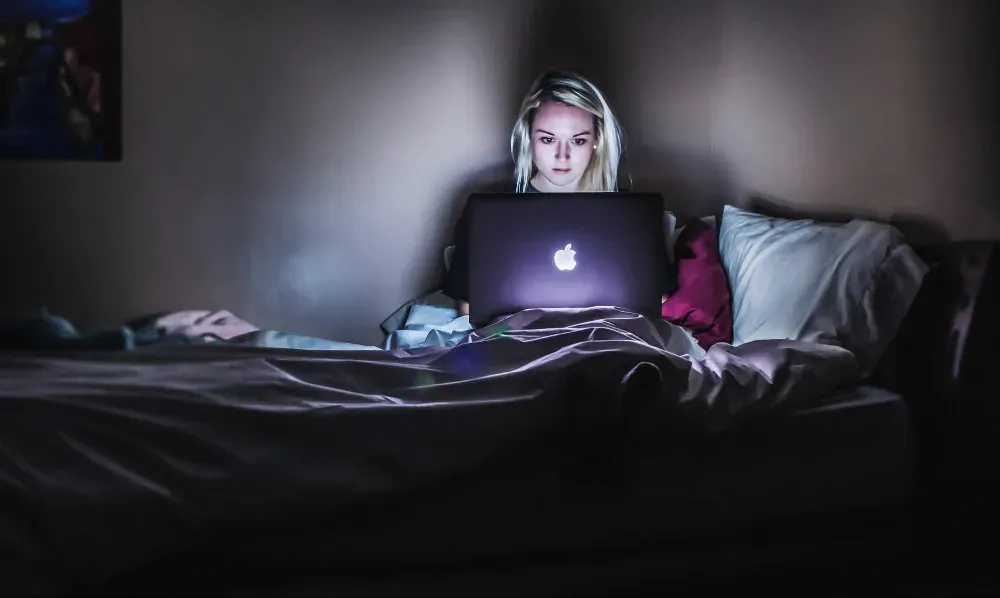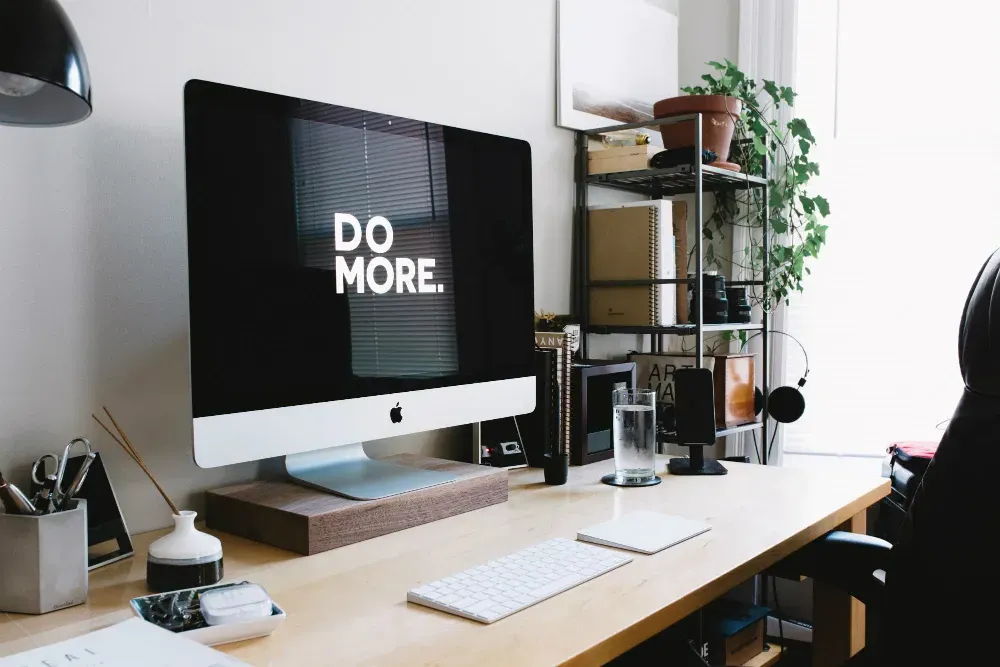How to cope with the pressure to do more
Written by

For many people in the arts, working life is saying ‘But after this week things will slow down a bit again,’ over and over, week after week, project after project, for the rest of our lives.
Beyond being a relatable meme, this constant battle with our calendars and the expectation to push through exhaustion is felt both as an internal and external pressure.
For many independent creatives, doing it all and doing more can stem from necessity. As Danielle Robson of SODA ARTS puts it, “When I was working within arts organisations, the pressure came from a pervasive sense that there is never enough money to go around, there’s always more to do – so you dig in and take on more for the greater good of achieving as a team.”
Now working for herself, the pressure takes on a different guise. “When running your own business, it’s difficult to say no to income when you rely on a pipeline of work to stay afloat, and you also feel the pressure to keep functions of the business in-house to keep overheads down – so you end up doing it all.”
For women especially, the drive to ‘do more’ is particularly pernicious because it can be a financial necessity, with women still earning less than men in 2019, adds Kylie Lewis, a consultant and Brene Brown certified facilitator. Lewis also thinks of the words of Courtney E Martin, who said, “We are a generation of young women who were told we could do anything and instead heard that we had to be everything.”
Be it industry expectations, busyness being worn as a badge of honour, the undulating nature of freelancing, perfectionism or limiting beliefs or a mix of all the above, this pressure to do more can lead to stress and exhaustion.
Working with ambitious and creative professionals, millennial burnout expert Charlene Rymsha has observed how the pressure to always be producing can take a toll.
“There is also a social pressure to produce, produce, produce and have something to show for what you are doing so it has value and you have value.”
This productivity-pressure can be felt in any industry, but working in the arts industry introduces a certain vulnerability as often the work is often personal and subject to expectations, judgement, or criticism.
Our work also requires creativity, which is particularly at risk if we are edging on burning out.
“Chronic stress produces a fear-based response within the body, restricting your emotional, mental and physical flexibility so the feeling of negative consequences can feel higher and restrict your freedom to create,” explains Rymsha, who helps creatives say goodbye to burnout in a six-week course.
Despite feeling trapped by the pressure to do more, there are some techniques that can provide an antidote.
Make the most of small moments
What can be overwhelming about addressing the pressure is that often we are given more things to add to the to-do list: meditate, exercise, eat well, take a bath, see friends.
But simplicity, starting small and favouring consistency over quantity can be a salve, explains Rymsha. “I have clients do a six-minute guided meditation in the morning because everybody has six minutes, and also take mini breaks throughout the day.”
When our brain is addicted to productivity, it’s about tricking the mind into relaxing and introducing what Rymsha calls “productive rest.”
“Allowing your brain to switch off by focusing on drinking a cup of tea, or listening to a guided meditation can trick it into thinking it’s being productive so the body can relax. In time, people can build a positive feedback loop to enjoy the art of doing nothing, and in time enjoy just being.”
Lewis agrees it’s important to start small and schedule in rest. “Whenever I have periods of intense work, I block out recovery periods. I do this on a weekly, monthly and quarterly basis. Schools have term breaks for a reason. Professional sports teams have on and off seasons for a reason. We’re not designed to run like computers. After a big year, I'm taking all of December and January off from client-facing work. I'm about to decline a speaking engagement in January to honour this, because I want to stay out of resentment and honour my need for rest, recovery and connection to my family,” she says.
Carl Heyerdahl on Unsplash
Trust there will be more
Not knowing when the next gig will come from, or whether you will get this chance again can make it difficult to say no to doing more.
As Lewis puts it, it can be an ongoing tug of war trying to find the balance of challenging yourself to leap and being ‘enough’.
“One of my core values is courage, and for me that often means stretching myself and doing things that feel scary. But I’ve come to also understand, courage can also mean walking away from opportunities or ideas, rather than playing into a scarcity or perfectionist mindset,” says Lewis.
In Mindset: The New Psychology of Success social psychologist Carol Dweck explains the difference between having a fixed mindset about our character, intelligence, and creative ability, and a growth mindset.
“Believing that your qualities are carved in stone – the fixed mindset – creates an urgency to prove yourself over and over,” writes Dweck.
On the other hand, a growth is based on the belief that your basic qualities are things you can cultivate through your own efforts. “Although people may differ in every which way – in their initial talents and aptitudes, interests, or temperaments – everyone can change and grow through application and experience,” she writes.
When we cultivate a growth mindset, not only do we expand how we see the possibility in ourselves, but we see the possibilities of the world around us. We stop thinking of something as the last, and look forward to the next – and therefore the space in between. Be it a period of stillness or a period of push through, it can also be helpful to determine what’s humanly possible, adds Lewis.
“I see people in struggle because they carry their ideas about what’s possible inside their heads. When we get it down on paper and map it to a calendar, it becomes really clear about what can and can not be done and factor in a buffer of time/money/resources for the unexpected,” she says.
As creative business owner Robson puts it, we can begin to recognise the waves and be okay with them. “For me, the push-through periods come in waves. In the thick of a project or particularly busy period, stopping isn’t realistic. But I know that it is a moment in time and I make sure I take the time to stop and decompress on the other side.”
Cultivate self-compassion and vulnerability
Part of why we might pile more on our to-do list is the fear of disappointing another person or ourselves, whether it be due to a need for perfectionism or not having communicated our boundaries.
While it does get easier to say no or ask for what we believe we deserve, vulnerability is required to have the conversation in the first instance, which requires its own set of work, explains Lewis.
“Brené Brown defines vulnerability as risk, uncertainty and emotional exposure. It is definitely a vulnerable act to set boundaries, to say no and to ask for what you need. But I think you can only get there if you first cultivate self-compassion.”
Self-compassion requires talking to yourself like someone you love – which in time can teach us what we deserve, and eventually help us ask for that. “When we listen to that voice and believe it, then we can bid the vulnerability required to make change. When you start to talk and treat yourself like someone you love, you start advocating for yourself in ways that are kinder, more humane and more sustainable. You are more likely to establish boundaries, care less about what the critics in the cheap seats say, and stand in your truth.”
You always have choices, adds Lewis. “Sometimes we forget. Don’t say yes or no straight away. Give yourself breathing space. Remember it’s OK to let things end. It’s OK to pivot. It’s OK to get off the path. As much as you can start something, you can stop too.”
Rymsha agrees that paying attention to our choices can can be a powerful way to get out of a pattern of doing more and more.”For some people, the full recognition that they have choices to make small changes and they can create a day that doesn't look and feel overwhelming but can open them up to so much more,” says Rymsha.
Top down strategies
Of course, it’s not all on the individual to cultivate self-compassion and initiate the difficult conversations – more needs to be done to address overtime, systemic issues and underpay within the sector.
A workplace culture that welcomes open communication and honesty is key, said Robson. “When senior management trust and respect that staff intentions are good, staff members will feel comfortable coming forward if they feel overwhelmed and are not coping, without fear of retribution. In my experience, great managers will help staff find a solution to recalibrate their workload and move forward.”
We could also learn from the corporate world, she adds. “There’s a lot of information out there about the ‘workplace of the future’ which many private companies–big and small–are embracing. This includes flexible work hours, unlimited annual leave, and awareness that the ‘health and well-being’ of an office is intrinsic to employee well-being.”
For many arts organisations, most of this is beyond reach due to financial constraints, but we also have the advantage of being resourceful and creative, adds Robson. “In a sector as full of creative minds as the arts, there must be a solution that elevates the experience of the arts workplace, which in turn could reduce staff burn-out and turn-over.”
In the interim, it’s all about setting ourselves up for a life we want, remembering we have choices, and we can create small pockets of self-compassion in our days.
“The discomfort of setting boundaries, of saying no, of shifting priorities, or pacing ourselves, of cultivating less but better, of focusing on the essential few rather than the distracting many will always serve living a wholehearted life,’ concludes Lewis.
Written by Madeleine Dore, originally published by our friends at ArtsHubub.
